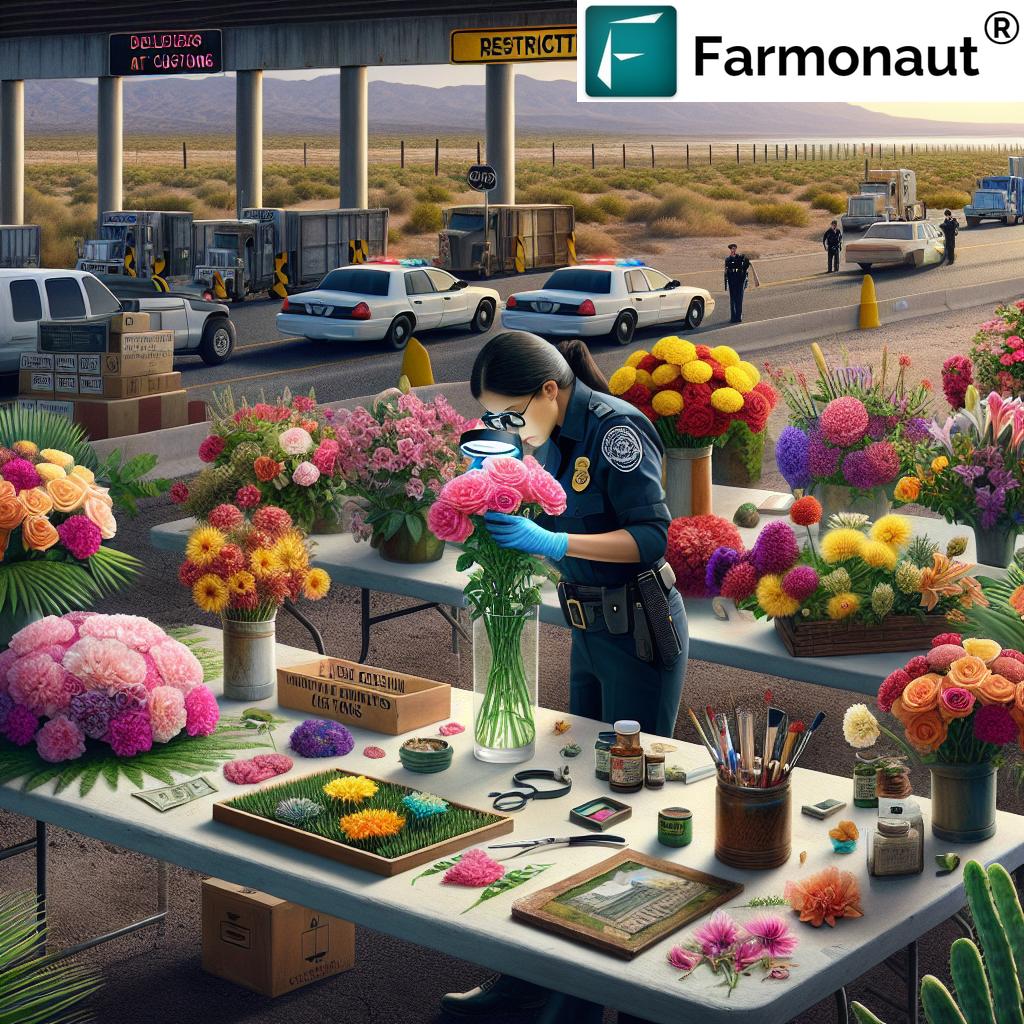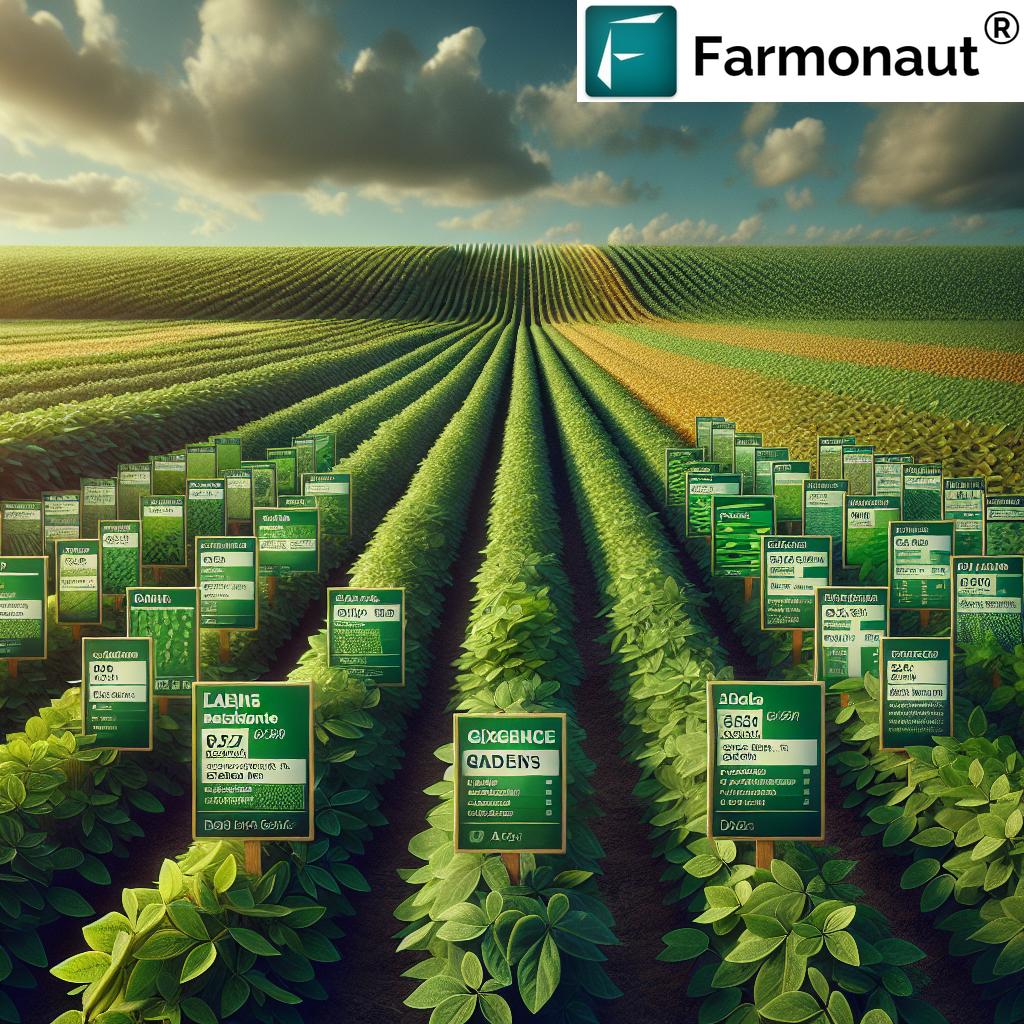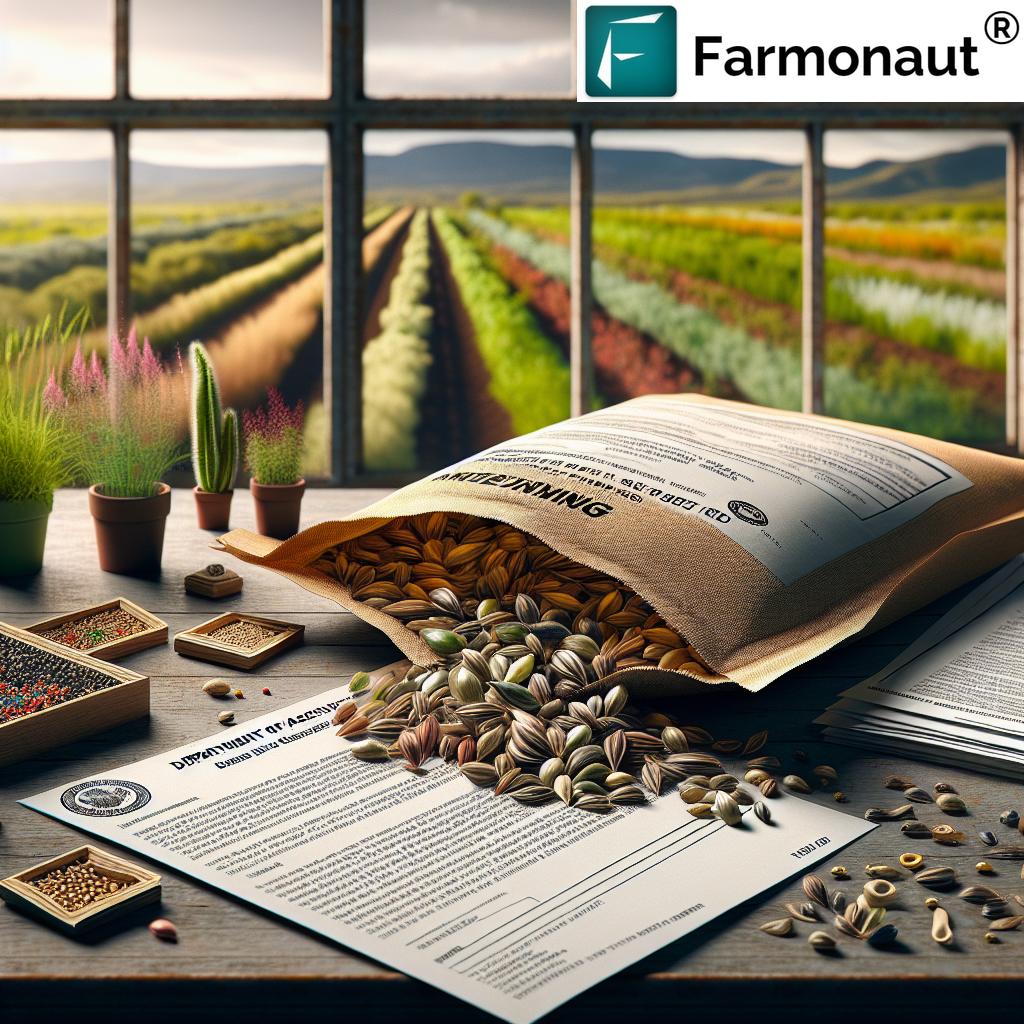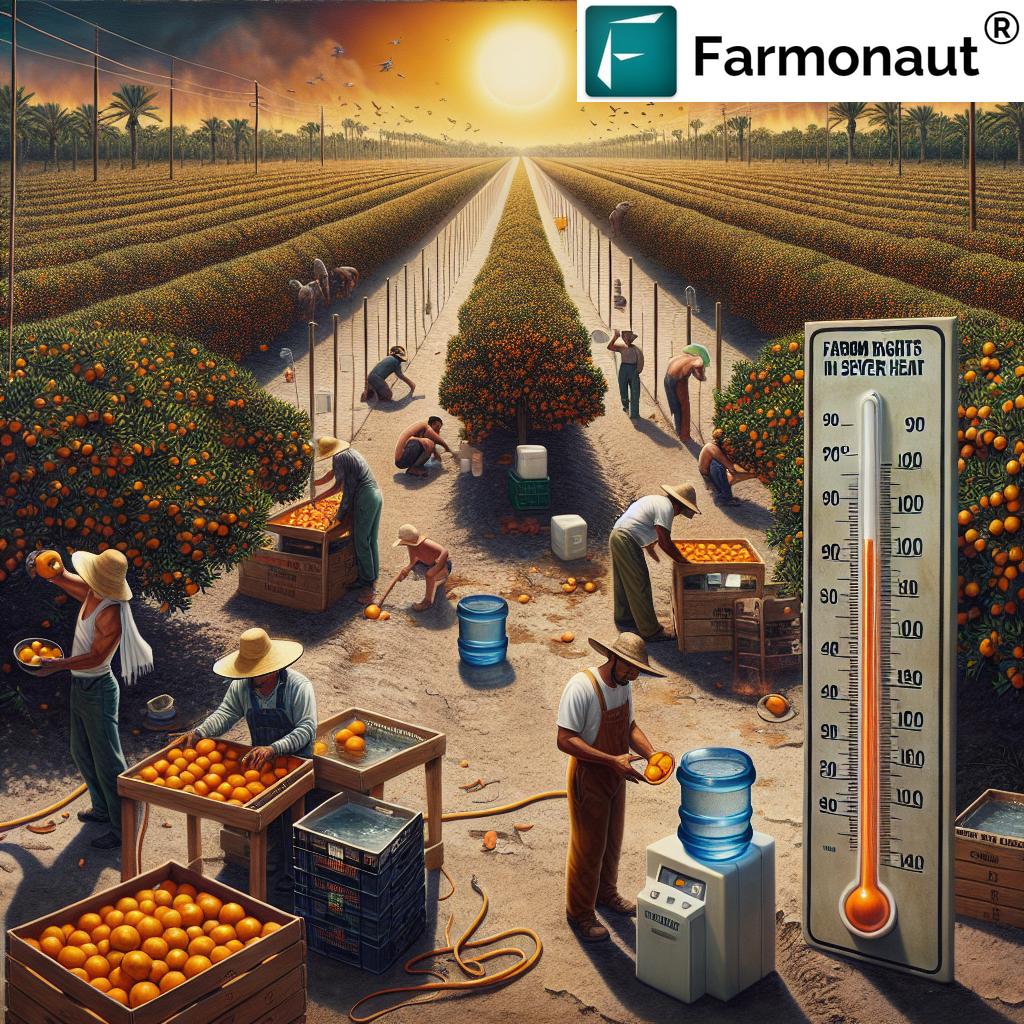Table of Contents
- Introduction
- Understanding CBP Restrictions on Flower Imports
- Why CBP Rules Matter for Sustainability and U.S. Agriculture
- 7 Vital CBP Rules for Importing Flowers from Mexico
- 1. Always Declare Flowers and Plants at Customs
- 2. Know Which Flowers and Plants are Prohibited or Restricted
- 3. Understand Soil Import Regulations
- 4. Be Aware of Pests and Invasive Species Threats
- 5. Bouquet Fillers and Greenery are Carefully Inspected
- 6. Inspections are Thorough and Technology-Driven
- 7. Permits for Growing Plants: What’s Required?
- Summary Table: CBP Flower Import Restrictions from Mexico
- Farmonaut’s Satellite Technology: Strengthening Crop & Environment Protection
- Practical Tips for Crossing the Border with Flowers
- Essential Resources & Useful Links
- FAQs on Importing Flowers from Mexico
- Conclusion: Responsible Flower Imports and U.S. Sustainability
“Over 2,000 plant pests are intercepted annually at U.S. borders, many hidden in imported flowers from Mexico.”
Importing Flowers from Mexico: 7 Vital CBP Rules to Protect Crops
As residents and visitors cross the san diego border or other U.S. entry points, the vibrant bouquets carried from Mexico speak of celebration, family, and tradition. But beneath the beauty of these blooms lies a crucial reality: the movement of flowers across global borders can inadvertently introduce pests, disease, and invasive species that threaten the very foundations of American agriculture and the environment.
Each year, especially around peak seasons like Mother’s Day, U.S. Customs and Border Protection (CBP) steps up its vigilance. The inspection process for imported flowers from Mexico becomes especially rigorous as we strive to protect our crops, safeguard exports, and ensure our landscapes remain bountiful and diverse. For travelers and commercial importers alike, understanding the rules surrounding agricultural products inspection, restricted plants at the border, and prohibited flowers and plants is essential not only to avoid penalties but to become responsible stewards of our shared ecosystem.
Understanding CBP Restrictions on Flower Imports
U.S. border agricultural restrictions are not arbitrary—it’s a carefully considered defense for our nation’s food security and biodiversity. Why such strict attention? Simply put, certain plants, flowers, and even traces of foreign soil may carry insects or fungi that don’t naturally exist in the United States.
- Some invasive species can rapidly spread without natural predators, overrunning commercial and domestic crops.
- Soil and plant debris may harbor microscopic eggs or spores—posing invisible risks.
- One infested bouquet could result in widespread crop damage and costly eradication efforts across regions.
The CBP inspection process—which involves physically shaking the imports, using magnifying glasses, and deploying advanced digital imagery and technologies—is thus essential. The goal? Invasive species prevention, safe agricultural products inspection, and the ongoing viability of U.S. crops.
Why CBP Rules Matter for Sustainability and U.S. Agriculture
We might marvel at the arrangement of roses, the allure of carnations, or the lush accents of green fillers in imported bouquets. However, our national responsibility extends far beyond aesthetics. By enforcing strict import regulations at the border, we are actively investing in:
- Protecting domestic producers: Blocking the path of harmful pests and diseases that could affect farm livelihoods.
- Ensuring food security: Preventing plant illnesses that might cripple harvests and diminish yields used in the food supply chain.
- Safeguarding trade and exports: Reducing containment costs and protecting international agricultural reputation by monitoring what enters the States.
- Maintaining biodiversity: Keeping America’s unique ecosystems safe from invaders.
As a leading agricultural technology company, we at Farmonaut recognize the critical importance of monitoring changes in crop health, soil quality, and environmental stressors—all factors deeply affected by the introduction of pests and diseases through uncontrolled floral imports.
Importing Flowers from Mexico: 7 Vital CBP Rules to Protect Crops
In the following sections, we outline the seven most vital CBP rules every individual or business must follow when importing flowers from Mexico. Each rule is not just a regulation, but a crucial step in supporting national agriculture, trade, and sustainability goals.
1. Always Declare Flowers and Plants at Customs
The most essential rule for bringing bouquets into the United States is to declare all plants, flowers, and agricultural products to CBP officers on arrival. This requirement is non-negotiable:
- Declaration helps identify and direct shipments for appropriate inspection.
- CBP officers are trained to quickly examine and assess the risk.
- Failure to declare can result in fines, seizure of products, or even civil and criminal penalties.
This step is crucial for both personal travelers and commercial importers and supports national invasive species prevention efforts.
2. Know Which Flowers and Plants are Prohibited or Restricted
CBP maintains a clear list of prohibited flowers and plants. While popular options like roses and carnations can usually pass inspection, several species are strictly controlled:
- Chrysanthemum: Banned at passenger ports when brought from Mexico due to its tendency to carry Chrysanthemum White Rust, a destructive fungi affecting U.S. flower producers.
- Murraya (Orange Jasmine): Commonly used as a bouquet filler, this plant can harbor the Asian citrus psyllid (citrus pest), threatening domestic orange and lemon crops.
- Plants meant for growing (not bouquets): These require special permits and often face additional scrutiny to ensure they are free from pests or diseases.
Reviewing the CBP Agricultural Products Guide before travel helps all travelers stay compliant.
3. Understand Soil Import Regulations
One of the most overlooked issues in flower imports from Mexico is soil. The CBP does not permit any soil attached to roots or included in packaging:
- Soil is a significant carrier of hidden pests, insect larvae, and disease agents.
- Even plant samples for growing must be soil-free unless accompanied by pre-arranged permits and USDA clearance.
- Violations of soil import regulations can result in disposal of imported materials and penalties.
Always ensure that the items you bring are clean, with roots or stems properly washed and wrapped.
“CBP inspects 100% of commercial flower shipments from Mexico to prevent invasive species threatening U.S. crops.”
4. Be Aware of Pests and Invasive Species Threats
Each inspection at the border is a frontline defense against pests that threaten our crops and natural environment:
- CBP agriculture specialists vigorously shake flowers and use magnifying glass inspections to detect otherwise unseen insects or disease symptoms.
- When suspicious material is found, it is sent to the U.S. Department of Agriculture for digital imagery analysis and expert identification.
- Both natural and artificial fillers are focus points during the inspection process.
These measures help halt the spread of white rust, citrus psyllid, and other threats before they can damage domestic agriculture or diminish export capacity.
5. Bouquet Fillers and Greenery are Carefully Inspected
While most attention focuses on the main flowers, border officers are equally strict about greenery and decorative fillers:
- Murraya or orange jasmine is scrutinized for the Asian citrus psyllid.
- If any part of a bouquet contains infested material, the entire shipment may be seized.
- Common fillers like eucalyptus, various ferns, or myrtle also attract inspection attention.
A precautionary approach is taken to minimize risk since these seemingly harmless accents could carry risks for U.S. agricultural health.
6. Inspections are Thorough and Technology-Driven
The CBP inspection process utilizes both traditional and modern technologies:
- Initial physical examination (shaking flowers, checking stems and petals).
- Use of magnifying instruments to hunt for small insects or subtle signs of disease.
- Transfer of samples to the Department of Agriculture for analysis via digital imagery and other advanced methods.
- In rare cases, DNA testing and AI-based diagnostics are enlisted for unusual or high-risk finds.
These inspection stages ensure a physical, visual, and technological safeguard to prevent the spread of invasive species into our valuable agricultural regions.
7. Permits for Growing Plants: What’s Required?
Unlike ready-to-display bouquets, any plants brought for growing must have proper USDA and CBP permits—whether seeds, cuttings, or saplings. Here’s what’s expected:
- Permits must be obtained PRIOR to entry.
- Plants must be soil-free or comply strictly with soil import regulations.
- Special documentation helps trace the origin and confirms pest-free status.
- Unauthorized attempts will be halted at the border and likely destroyed or re-exported.
Whenever possible, source plants locally within the US or ensure all paperwork is in order before attempting to cross the border.
Summary of CBP Flower Import Restrictions from Mexico
| Flower Type | Allowed/Prohibited Status | Reason for Restriction | % of Shipments Inspected | Common Penalties for Violations |
|---|---|---|---|---|
| Chrysanthemums | Prohibited (Passenger Ports) | Risk of White Rust Fungi, major crop disease threat | 100% | Seizure, fines, destruction of shipment |
| Roses | Allowed (After Inspection) | Check for aphids, mites, and leaf diseases | 100% | Seizure if pests found |
| Carnations | Allowed (After Inspection) | Potential carriers of thrips, mites, fungal spores | 100% | Seizure if infested/disease found |
| Marigolds | Allowed (Often, After Inspection) | May carry soil residue, beetle larvae | 100% | Seizure, fines |
| Lilies | Allowed (After Inspection) | Check for lily beetle, botrytis disease | 100% | Seizure, destruction if infested |
| Murraya (Orange Jasmine) | Prohibited | Carries Asian citrus psyllid (citrus pest) | 100% | Full arrangement seized |
Farmonaut’s Satellite Technology: Strengthening Crop & Environment Protection
Modern flower and plant inspection at the border is only one piece in a broader sustainability puzzle. At Farmonaut, we support these regulatory measures with space-age precision through carbon footprint tracking, blockchain-based product traceability, and fleet management tools available through our mobile, web, and API platforms.
- Satellite-based Crop Health Monitoring: Near real-time NDVI and soil moisture maps help visualize crop stress potentially linked to new pest outbreaks caused by imported species.
- AI-Powered Advisory Systems: Jeevn AI delivers actionable insights for pest management based on environmental shifts, supporting domestic producers in responding swiftly to biological threats.
- Blockchain Traceability: By tracking the full journey of agricultural goods, our platform helps mitigate risks of illegal plant or flower entry, increasing consumer trust and supporting compliance.
- Carbon Footprinting: Real-time monitoring of emissions allows farms to optimize practices—critical in the face of additional stresses caused by invasive species and the use of chemical countermeasures.
Our mission is to empower every stakeholder in the agricultural sector—from individual farmers to institutions—with the technological tools needed to sustainably manage resources while complying with evolving border restrictions and protecting our ecosystems.
If you’re an agri-business, research entity, or need API access to real-time crop monitoring and weather data for better risk management, discover our API at Farmonaut Satellite API or read our Developer Documentation.
Large-scale managers and admins interested in streamlined oversight of multiple fields or export-oriented plantations can explore our specialized Large Scale Farm Management App.
Farmonaut Precision Agriculture Subscription Plans
Unlock satellite insights, resource management, real-time crop health alerts, and compliance support for farms, agribusinesses, and agri-institutes:
Practical Tips for Crossing the Border with Flowers
- Check official lists: Before traveling, consult the Know Before You Go guide for updates on prohibited and restricted species.
- Cleanliness is crucial: Remove soil, snip unhealthy leaves, and inspect for bugs before packaging flowers for travel.
- Transparency works best: Always declare everything to officers at customs—being upfront helps avoid misunderstanding and demonstrates good faith.
- Don’t gamble with restricted items: Labelling mistakes or undeclared greenery could result in the entire bouquet being confiscated; err on the side of caution.
- If unsure, ask for help: CBP and USDA personnel are available for pre-clearance queries and have online resources for guidance.
Essential Resources & Useful Links
- Bringing Agricultural Products Into the United States – official guide for importers and travelers
- CBP Prohibited and Restricted Items – lists specifics on flowers, plants, and more
- Farmonaut Crop Plantation & Forest Advisory App – real-time farm management using advanced satellite insights
- Farmonaut Carbon Footprinting Platform – measure and manage farm/agribusiness emissions
- Farmonaut Crop Loan and Insurance Advisory – reliable crop area verification for better financial decision-making
- Farmonaut Satellite/API Access – direct integration for developers, institutions and agri-enterprises
Frequently Asked Questions: Importing Flowers from Mexico
Q1: Why does the CBP prohibit or restrict certain flowers like chrysanthemums from entering the US?
CBP restricts flowers such as chrysanthemums because they may carry Chrysanthemum White Rust, a highly destructive fungi that threatens domestic flower producers and agricultural exports.
Q2: What if I forget to declare my flowers at customs?
Failing to declare flowers or plants at customs can lead to civil or criminal penalties, including seizure and destruction of the material, as well as fines. Always declare to avoid issues.
Q3: Can I bring flowers that contain soil across the border from Mexico?
No. Soil import regulations are strict—no soil from Mexico is permitted due to the risk of soil-borne pests and disease. Clean all plants thoroughly before import.
Q4: Which fillers are prohibited in bouquets?
Bouquet fillers such as murraya (orange jasmine) are prohibited because they can carry the Asian citrus psyllid, a pest that threatens major US citrus crops.
Q5: What should commercial flower importers do to ensure compliance?
Importers should research and comply with all CBP rules for importing flowers, declare every shipment, keep accurate documentation, and stay aware of current prohibited and allowed flower species. All commercial shipments are inspected by CBP.
Q6: How does technology support the prevention of invasive species?
Satellite monitoring, digital imaging, blockchain-based traceability, and AI-driven advisories—like those from Farmonaut—help in early detection, response, and management of risks linked to invasive plants or pests.
Conclusion: Responsible Flower Imports and U.S. Sustainability
We all have a shared stake in maintaining the health, productivity, and sustainability of America’s agricultural landscape. Following CBP’s 7 vital rules for importing flowers from Mexico ensures not only compliance with the law but supports vital efforts around invasive species prevention, environmental stewardship, and crop productivity.
As agricultural technology specialists, we believe that combining strong regulatory practices with cutting-edge technology—like Farmonaut’s satellite-driven monitoring, emissions management, and supply chain traceability—is the best defense against crop, export, and ecosystem threats. For further information, guidance, or technology adoption, visit our official website or download the Farmonaut app.
Let’s make Mother’s Day, and every border crossing, a moment of joy—and a victory for sustainability.















